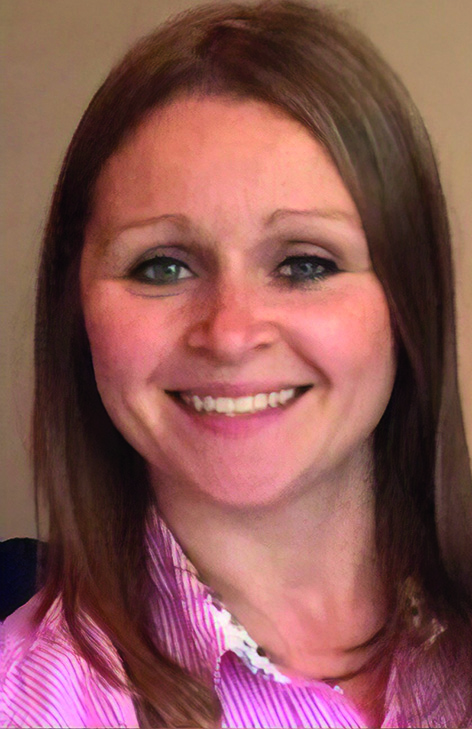
When the SEND code of practice was implemented in 2014, it was hoped that those working in nurseries would be supported to play a more effective role in delivering early interventions to our youngest children.
The Code aimed to clarify the approach for providers and embody a more joined-up approach across education, health and social care.
Part of this included the introduction of Education, Health and Care Plans (EHCPs) which replaced a Statement of Special Educational Needs.
But in the last nine years, many local areas have struggled to achieve the Code's aspirations. Well-documented common weaknesses have included a lack of joint commissioning and effective co-production, and poor-quality EHCPs. Many local areas continue to be unclear about who is held accountable for services and provision. There also continues to be a problem in identifying and assessing children and young people's needs.
While there are no imminent legislative changes under the new SEND and Alternative Provision (AP) Improvement Plan, it aims to end the ‘postcode lottery’ and hold elements of the existing system to greater account. This aim will be supported with a new set of National Standards developed following ‘engagement across education, health and care during spring 2023’.
At nasen, education officer Anna Speke says, ‘The Plan aims to make the SEND system more inclusive and accessible to all, regardless of location or circumstance. The existing code of practice will be reviewed and updated to reflect the changes made – although there is currently no timescale given for this.’
The Improvement Plan outlines intentions for ‘local inclusion plans, strengthened accountabilities and new inclusion ‘dashboards’ as part of the Change Programme. These are intended to provide data across education, health and care.
FUNDING FOR SEND
Early years providers can continue to apply for extra funding from the Disability Access Fund if an eligible child is attending their setting. The child needs to be receiving free early education and be in receipt of the children's disability living allowance (DLA) to qualify.
At this stage, the Plan does not detail any changes to the Special Educational Needs Inclusion Fund (SENIF) or the early years funding system. However, it does acknowledge the huge financial challenges faced by the early years sector, and states that the Government will work closely with local authorities and providers to consider whether changes will be needed going forward to improve outcomes for children and to support the national framework as it is put into place.
It is hoped that the national standards will also clarify who is responsible for delivering provision and from which budgets, resulting in the financial responsibility for SEND being shared more fairly across education, health and social care.
DIGITISING EHC PLANS
With the Plan comes a mandate to standardise the EHCP process with the use of digital technology. Work is starting on a national EHCP template, supported by guidance – ‘in partnership with relevant bodies, including parents, children and young people’.
Local authorities will be encouraged to adopt the template, and the Government may eventually legislate on its use. The full digital EHCP system is due to be rolled out fully in 2025. It is likely that this will be ‘encouraged’ rather than mandated initially.
 Stephen Kilgour, SEND advisor and outreach teacher for Tapestry, believes this is a welcome development, but remains concerned about funding. ‘We know from our own experience with Tapestry that digital technology needs to be resourced properly in a setting to be truly effective. Funding to support settings on their digital journeys would be a useful addition here.
Stephen Kilgour, SEND advisor and outreach teacher for Tapestry, believes this is a welcome development, but remains concerned about funding. ‘We know from our own experience with Tapestry that digital technology needs to be resourced properly in a setting to be truly effective. Funding to support settings on their digital journeys would be a useful addition here.
‘As someone who had a responsibility for creating EHCPs for children who had previously held a statement of SEND, I am well aware how challenging the process was – not least because each authority was left to fend for themselves when it came to creating processes and building templates. I was also very aware that the quality of the documents was incredibly variable.’
EARLY YEARS SENCOs
Best Practice Network, which is delivering the training, reports it has already received 3,500 applications and it is hoped that 3,000 SENCOs will be completing the course by the end of the year.
Accredited and funded by the DfE, it is open to Level 3 practitioners in PVI settings and childminders and Ofsted-registered childminder agencies. It is delivered online over four months through a mixture of taught and study sessions and will be available until August 2024. The programme is targeted at LA areas with the greatest need.
 Sian Marsh, director for early years and ITT at Best Practice Network, believes practitioners are keen to upskill. ‘They want the SENCO qualification and the recognition it brings,’ she says. ‘It's an ambitious programme which wouldn't be a reality without our national network of partners. It is very much about a shared sense of purpose.’
Sian Marsh, director for early years and ITT at Best Practice Network, believes practitioners are keen to upskill. ‘They want the SENCO qualification and the recognition it brings,’ she says. ‘It's an ambitious programme which wouldn't be a reality without our national network of partners. It is very much about a shared sense of purpose.’
FURTHER INFORMATION
- The SEND and Alternative Provision (AP) Improvement Plan: Right Support, Right Place, Right Time outlines the first steps that the Government will take in addressing the issues raised by the SEND Review: Right Support, Right Place, Right Time consultation. https://bit.ly/3okCsL0
Key takeaways
- National standards: The introduction of new national standards is intended to provide clarity for children and young people, families and professionals about what provision should be available. The standards will also make clear who is responsible for delivering and funding which elements of provision. The standards are due to be fully introduced in 2025 and PVI managers will need to ensure that their settings meet them – many already will. It is hoped that this standardisation will make it easier to evidence existing good practice and implement improvements going forward, enhancing universal provision for children.
- Workforce development: A key focus relates to upskilling the workforce, including access to training such as the funded EY SENCO qualification. There will also be increases in the number of educational psychologists being trained, and Early Language and Support for Every Child (ELSEC) pathfinders will be set up to improve access to speech and language therapy.
- Education, Health and Care Plans: Increased use of digital technology should make the EHC Plan process quicker and easier to navigate, and allow professional collaboration.
- Accountability: Local inclusion plans will be developed and inspection frameworks will have an increased focus on outcomes for children with SEND. Inclusion dashboards are being planned to help to improve transparency at local authority level.
- The code of practice will also be updated, so settings will need to be aware of any amendments made when this comes. Working closely and mutually supportively with parents, carers and other professional agencies will continue to be a key part of the collaborative and cohesive approach outlined in the Plan. (Source: nasen)









